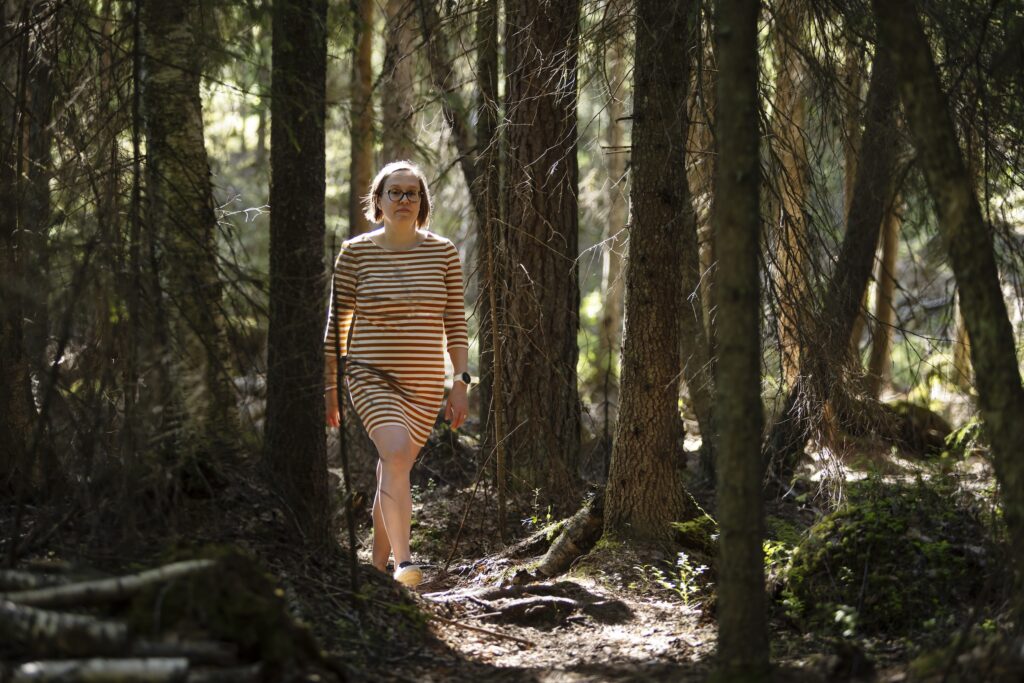Valmet

Valmet uses SimaPro to meet the requirements of both their customers and the EU taxonomy
Valmet is an industry leader that started conducting life cycle assessment (LCA) of its products in order to meet the requirements of the European Union taxonomy. In addition, their customers need the calculations on products they buy, and there is also a lot of interest in the data among Valmet personnel. The objective is to continue to make more extensive use of SimaPro’s features in cooperation with Miljögiraff’s experts.
The Taxonomy Regulation entered into force in 2020, and a couple of years later, Environmental Analysis Manager Pirkko Alander was hired to start life cycle assessment for Valmet.
Pirkko Alander works in the product development team of the entire Valmet Group, from where the results are implemented in different business functions. At the same time, the practical work is closley connected with the sustainable development team.
“My role is to help to identify which of our products are in such categories of the taxonomy that they require life cycle calculation, and to take care of the calculation for these products. I also help different business operations with customer requests,” Pirkko says.
Pirkko Alander is a Master of Science from the University of Tampere. The topic of her thesis was the environmental sustainability of an express freight company, which sparked an interest in the subject matter. In 2005, there were not many jobs available in the field of sustainability. Pirkko joined Valmet in late 2022. The company started using SimaPro in early 2023.
“Ten years ago, there was little interest in LCA calculations in the market. Now they have emerged again, in what I consider to be a much more extensive scale. I had no previous experience with SimaPro before joining Valmet, but I had been involved in LCA projects.”
Valmet has performed both complete cradle-to-grave calculations and partial cradle-to-gate calculations. Cradle-to-grave refers to a calculation that covers the entire life cycle of the product until the end of its service life. A cradle-to-gate calculation, on the other hand, takes into account the life cycle of the product until it is ready for delivery from the factory. Different needs require different calculations.
Customers need to know how much carbon emissions they have bought
On the other hand, the draft of the EU Green Claims directive would require, upon entering into force, that companies’ environmental claims concerning products are based on facts regarding the life cycle of the product and that these claims are verified by a third party.

The taxonomy figures are published in the annual report in connection with the financial statements. Pirkko says that being able to demonstrate environmental impacts numerically has also been beneficial within the company:
“I have given presentations and written articles for our intranet. People have been really interested and glad to receive more information on the subject. The product-specific calculations have opened up a new perspective on our products, and they have been received with great interest.”

Exchanging ideas with the experts at Miljögiraff has been a highlight
“When we bought the software, we also bought a training package. This included 10 hours of training with experts from Miljögiraff. That has been of paramount importance. It was really instructive to review our own model with them. We have continued to cooperate with Miljögiraff since then and have purchased training sessions. When the other party has a doctorate in life cycle analysis and 20 years of experience in doing these calculations, I can rest assured that I’m in good hands.”
Integration with Tacton’s CPQ solution has potential
“It makes sense to be able to tell already at the sales stage what each option costs and how much it increases or reduces carbon dioxide emissions. In the future, we should develop the scalability and repeatability of the calculations and learn how to get to the end results of the cradle-to-gate calculation faster than we currently do. However, we want to first see what low hanging fruit is available to us. Now that we already use SimaPro, Tacton’s CPQ solution could offer some.”

Valmet is the world’s leading supplier and developer of process technology, automation solutions and services for the pulp, paper and energy industries. The company serves an even wider customer base in the process industry with their automation systems and flow control solutions. Valmet has over 220 years of industrial history and employs more than 19,000 professionals.
Photo: Laura Vesa